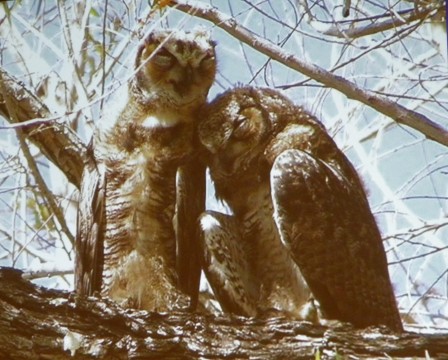Avian Angels and Devils in your Garden: Part I
As I grow older, my interests expand. Living across the canyon from a “birder” couple, I have become more aware of birds. However, when Mike Matherly from the San Diego Audubon Society spoke to Mission Hills Garden Club members, that awareness rose to a new level. I am now fascinated by and curious about our feathered friends.
Matherly, a retired college geology professor, leads bird watching trips to South America. My birder friends have been on at least two of his trips.
According to Matherly, “Birdwatching is now the top recreational activity in the country; almost 70 million Americans a week take time to look at birds, if only in their backyards. In every state, birding is more popular than fishing, hunting, and all team sports combined. Even in North Dakota, bird watching is more popular than bowling.”
Matherly pointed out that the famous painter of birds, John James Audubon, John James Audubon, who lived from 1785 until 1851, was able to do so because he shot them. Painting still birds was easier. Some days he killed one hundred birds. Today the goals of San Diego Audubon Society is to foster the protection and appreciation of birds and other wildlife, preserves habitats through study and education, and advocates for a cleaner, healthier San Diego.
Matherly discussed “resident” birds — those who remain in Mission Hills all year long. Birds are “sentinels of the environment.” When crows and starlings increase, they signal that something is wrong. They are like “canaries in the mines,” signaling a decrease in habitat for many birds. Crows have increased and thrive in cities and neighborhoods like Mission Hills because they dine on our garbage and street trash. Our fondness for ornamental hedges and trees give crows safe nesting sites. Finally, crows are drawn to street lights which make night-time predator-spotting night easier. Hundreds of thousands of crows might be found together, especially in night roosts. “Combine all this with intelligence and excellent memories and crows are difficult to eradicate.”
Their cousin, the common raven, has the intelligence of a six year old child. Matherly told us ravens are capable of logical thought. They are known to lead larger predators to prey in order to feast on a creature too big for them to kill.
We should value them as they clean up road kills and people spills.
Anna’s hummingbird is another year-round resident. The female has a hard life. She builds two nests a year, lays and broods the eggs, and raises and fledges the babies. To feed herself and her young, she must carry her weight in nectar daily. Meanwhile Matherly describes the male hummingbird as “a deadbeat.” His only job is to copulate.
Among other resident birds which Matherly described are Bushtits which “move in packs.” Matherly refers to them as exterminators as they go over every leaf, eating every bug in sight.
Lesser goldfinch and the most common bird in San Diego, the larger housefinch, like Mission Hills as well. They sometimes hang upside down to reach their food. With a lifespan about eight to twelve years, their favorite food is dandelion seeds. This may explain an abundance of dandelions beneath their favorite trees. Although male housefinches come in several colors, red housefinches attract more females.
Other resident birds include black phoebes who are making a comeback as we build more houses with Spanish tiled roofs, their favorite site for mud-nests and California towhees, who, like many birds, mate for life. The towhee couple, however, cannot bear separation. Should one go higher or farther ahead than the other, it will frantically call its mate until they are together again. More resident birds are Cooper’s hawks, European starlings, Mourning doves and western scrub jays.
Sadly, imported birds crowd local birds out of habitats. English house sparrows are extremely aggressive, eat weeds instead of insects, dump eggs out of a nest they like and call it home instead of making their own nests.
The European starling, another year-round Mission Hills resident, shouldn’t be here at all. Sixty starlings were brought to the United States from Liverpool in 1891. They spread across the country, reaching San Diego in 1948.
Still another local resident is the mockingbird, aka mimus polyglottos. Capable of mimicking calls of 200 other birds, it can recreate a cell phone’s ring or a car’s alarm. Apparently when males make these noises, they attract the ladies–lady mocking birds, that is.
Mourning doves, although common, are extraordinary flyers. They can fly 55 miles per hour; once off the ground, even hawks can’t catch them. Nonetheless, they become dinner often enough that they must breed as often as six times a year to offset their losses.
Some birds are night predators. Great horned owls eat crows, raccoons, small house pets, and even skunks. Should the owl belch or regurgitate an owl pellet, the stench of skunk may linger in the air for hours. Another night predator, the barn owl, can hear a mouse running a mile away. Each ear is at a different height on the head enabling it to locate sounds accurately. With extremely high metabolisms, each owl eats six or seven mice per night. Because they fly just above roads and streets, automobiles cause most of their deaths. These owls mate for life, but they cannot stay together constantly and still provide food for their young. One stays with the owlets while the other (usually the father) brings home the food. With the great horned owl and the Cooper’s hawk, they keep Mission Hills’ rodent population in check.
Birds warn us of environmental problems, control insects, pollinate and spread plants, and provide pleasure to the humans who watch them. Because of climate change, however, one in three land birds will be gone by 2100. We need to preserve breeding grounds and to support conservation measures.
Matherly’s talk included migrating birds as well. Tune in for Part II next month.
Category: Life Style








